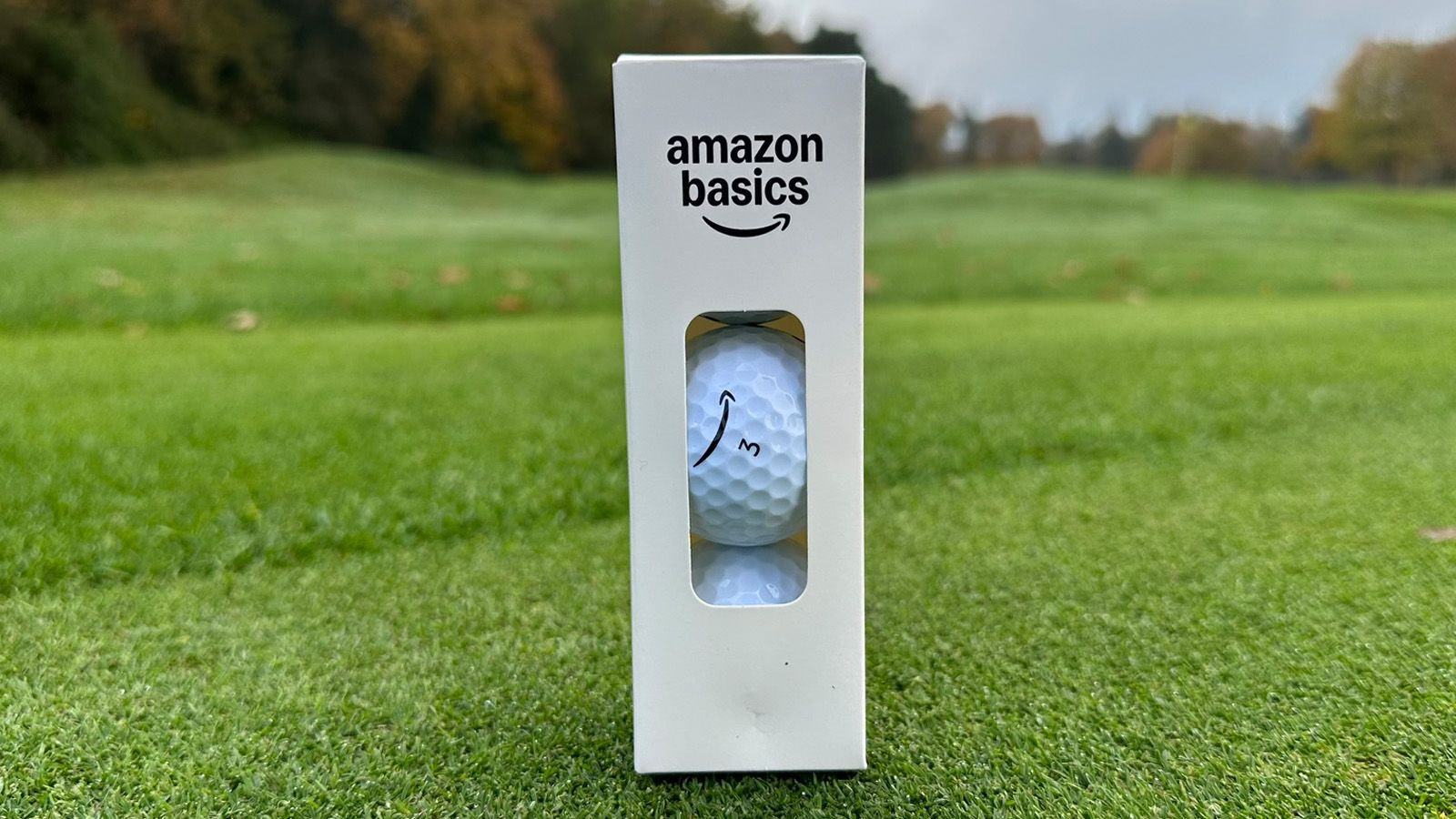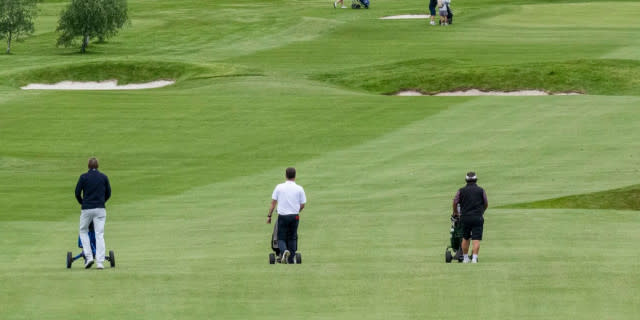The Amazon Basics Core Soft Golf Ball marks the e-commerce titan’s first venture into the golf ball space, one that is dominated by some icons like the Titleist Pro V1 and TaylorMade TP5.
While Amazon hasn’t come into the market to directly compete with these bigger brands (not yet, at least) I wanted to give the Basics Core Soft golf ball a fair crack at the whip. So I took them onto the course and put them to the test using my Foresight Sports GC3 Launch Monitor to see how they performed and whether you should consider using them.

(Image credit: Future)
My first impression was a little underwhelming. The balls don’t arrive in a traditional dozen box, instead, you receive four loose sleeves of three balls in a standard Amazon cardboard box. I’m still making up my mind on this – is it a clever eco-conscious design saving on unnecessary packaging, or is this outweighed by the annoyance of now having four loose sleeves rattling around my bag? I’m leaning towards the latter.
Best picks for you
Taking the ball out of the sleeve, it doesn’t feel great in the hand, largely because the outer cover feels fairly cheap. This initial inspection immediately set my expectations of the ball fairly low, despite already knowing the $15 a dozen price point. The logo was also a little large, which detracted from the overall look.
Image 1 of 2
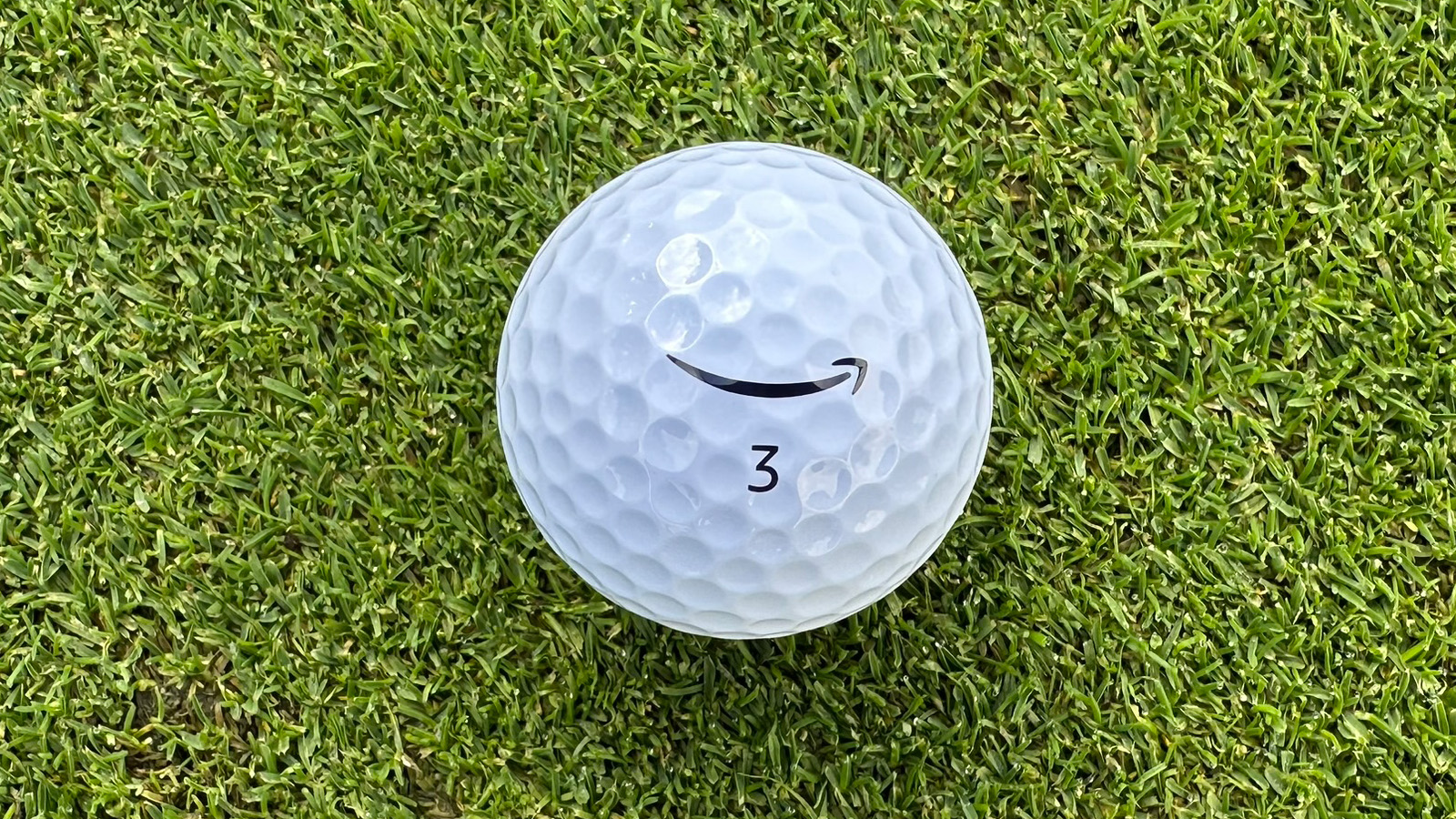 Amazon Basics Core Soft Golf Ball(Image credit: Future)
Amazon Basics Core Soft Golf Ball(Image credit: Future) Amazon Basics Core Soft Golf Ball(Image credit: Future)
Amazon Basics Core Soft Golf Ball(Image credit: Future)
Out on the course, the ‘Core Soft’ name definitely rings true, especially with the scoring clubs. After just a few chips before my round, I knew I would struggle with distance control with this ball because it felt as though it really jumped off the face. I usually steer towards a firmer feeling ball as I like that ‘clicky’ feel, particularly with my wedges and putter.
When hitting a 50-yard pitch with my usual Pro V1x, I would look to see the ball spin around 7000 rpm. The Amazon Basics Core Soft Ball was around 2000 rpm less, which was a little concerning to see.

(Image credit: Future)
When moving through the bag, I started to realise centred hits with my irons would feel good, yet often fall five yards or so short of where I usually am. This trend continued when stepping back to the tee, yet if anything was exaggerated.
To put it simply, the distance output was low due to the ball spinning up quite a bit, especially on heel strikes – something that was also shown by my Foresight GC3 launch monitor. It just didn’t seem to have the ‘pop’ of some of the other best value golf balls or best cheap golf balls.
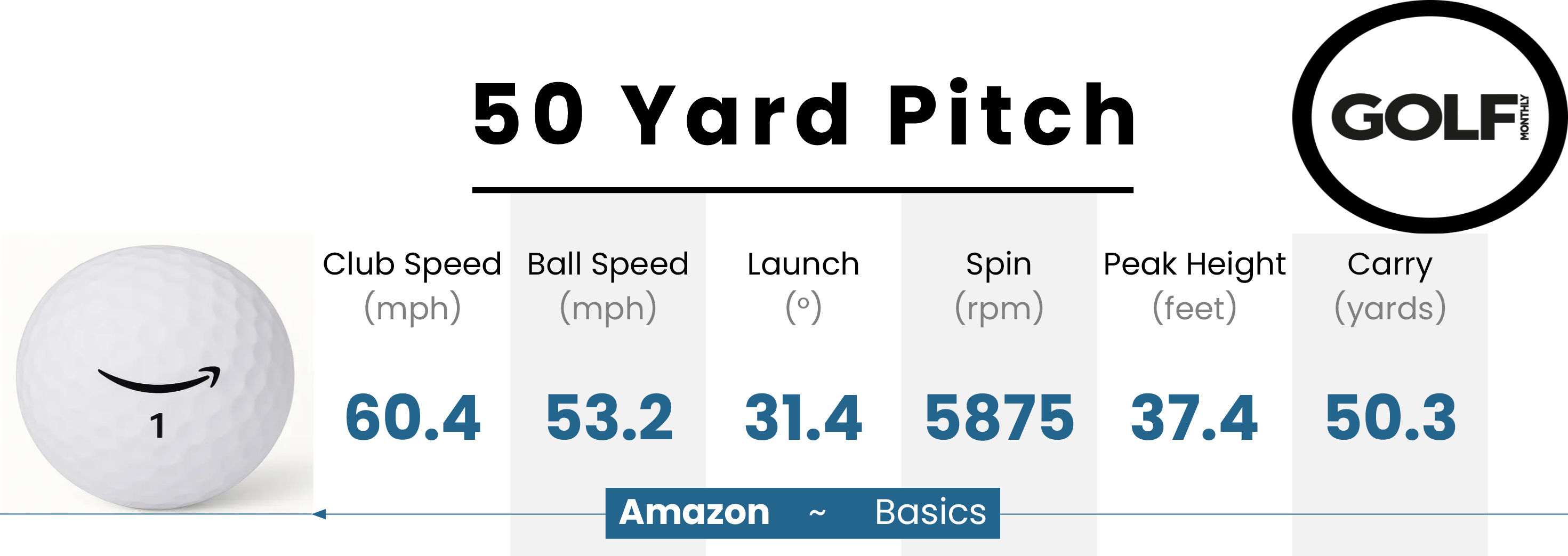
Amazon Basics Core Soft Golf Ball wedge shot data
(Image credit: Future)
While I felt a lot of the time the Basics Core Soft ball ballooned up in the air, losing energy, which ultimately robbed it of distance, I also saw some strange behaviour from the rough, where ironically it didn’t seem to spin enough, and I experienced quite a few ‘flyers’. On average, though, particularly from the fairway, going long of the green was no issue as I was consistently shorter than with my usual gamer (Titliest Pro V1x). I would typically see my 7-iron carry around the 175-yard mark and my longest carry with the Amazon Basics Core Soft ball was 169.
If distance is something you prioritise, you may want to look elsewhere, although those with slower swing speeds might not see as significant a drop off in speed and distance as I did.
Usually, I would look for my ball to spin at around 2100/2200rpm which, with my clubhead speed and launch characteristics, would usually see the ball carry around the 300-yard mark. As you can see from the data below, this ball fell on average 20 yards short of this, likely due to the excessive backspin.
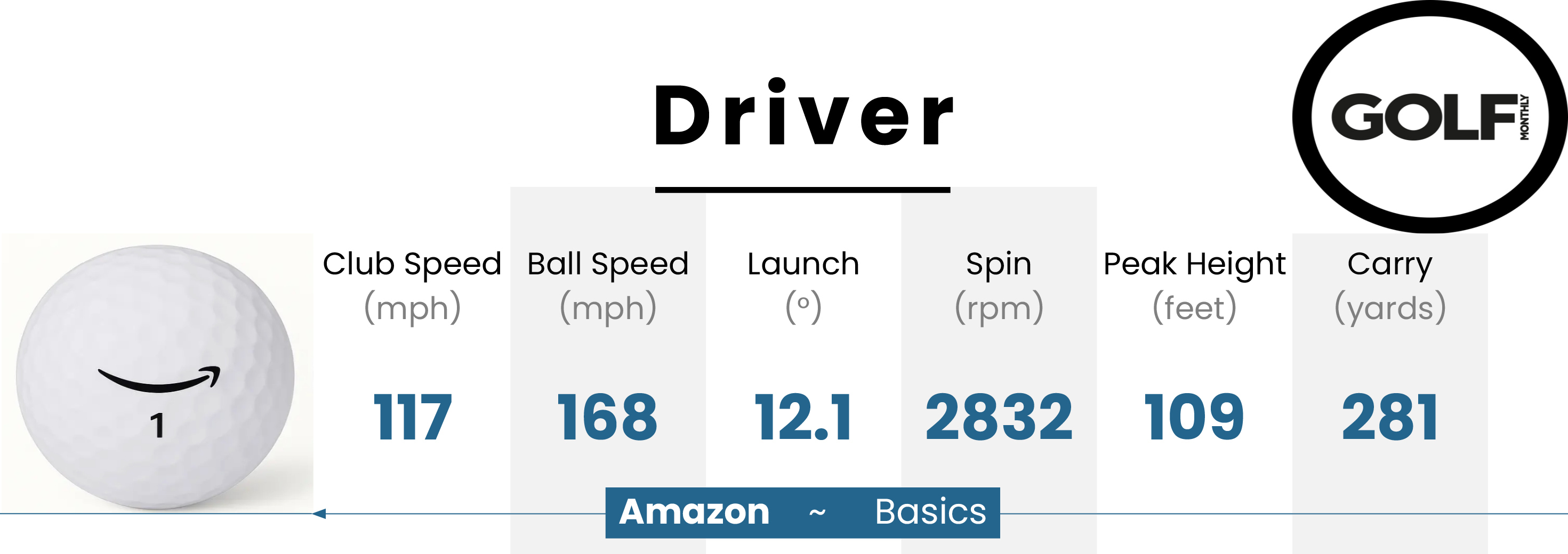
Amazon Basics Core Soft Golf Ball driver data
(Image credit: Future)
While Amazon’s entry into the market is noteworthy, this first attempt feels more like a box-ticking exercise than a case to become a serious contender in the market. Golfers who enjoy a soft feel above all else might find some appeal, or those who have just started and want superb value per ball ($1.33) they can afford to lose in the trees.
But for most players, the significant drawbacks in distance, spin and consistency will likely be a deal-breaker and see them return to one of the best golf balls with better all-around performance from tee to green.

